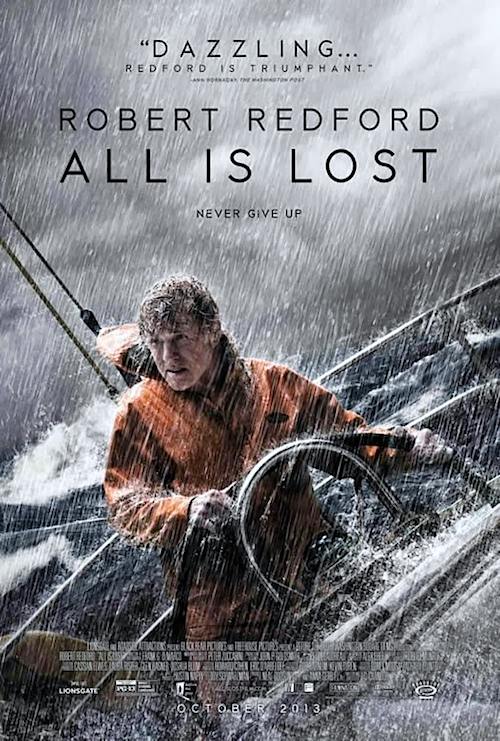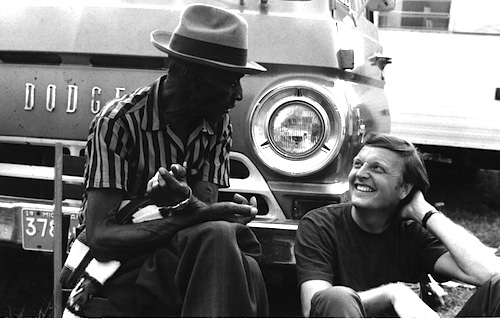By Joe Bendel. There is an old man and the sea—sans marlin. There is no tiger, either. Instead, it is an errant workaday cargo container that leads to a mortal and existential crisis in J.C. Chandor’s All is Lost, which opens this Friday in New York.
“Our Man,” as he is simply billed, is in the midst of a solo cruise through the Indian Ocean when his small yacht is struck by said container. He wakes to find his boat taking on water and the electronics, including the radio, shorted out. He is able to patch up the gaping hole and bail out most of the water, but lasting damage has been done. Sailing blindly as a result, Our Man unknowingly proceeds towards a Sebastian Junger-level storm.
 Considering it arrives so soon after Ang Lee’s Oscar winning Life of Pi, viewers might assume Lost is just more of the same. However, there is a muscular leanness to Chandor’s film that frankly compares favorably to its predecessor. All the New Age allegories and comforting sentimentality are stripped away, leaving a mere man to face the elements alone.
Considering it arrives so soon after Ang Lee’s Oscar winning Life of Pi, viewers might assume Lost is just more of the same. However, there is a muscular leanness to Chandor’s film that frankly compares favorably to its predecessor. All the New Age allegories and comforting sentimentality are stripped away, leaving a mere man to face the elements alone.
On one level, Chandor’s screenplay is relatively simple, with almost no dialogue to be heard from start to finish. Still, despite the limits of the water-bound location, Chandor dexterously introduces one darned thing after another to torment his sole character. Being the one and only face of a film is always a considerable challenge, but the shockingly haggard looking Robert Redford (showing his full seventy seven years) rises to the occasion. Rather than acting out and raging against fate, he vividly portrays the man’s slow deflation, which is far more compelling over time.
If not as visually arresting as Pi, Lost fully conveys the cold, damp, claustrophobic crumminess of Our Man’s precarious situation. Technically, it is quite an accomplished film, with particularly credit due to the Tahoe, the Tenacious, and the Orion, the three vessels that sailed their last as stand-ins for Our Man’s ill-fated Virginia Jean.
If nothing else, Lost should convince viewers not to look in the middle of the Indian Ocean if they want to go find themselves. It is surprisingly gripping stuff, buoyed by a remarkably disciplined performance from its craggy star. Recommended for those who appreciate a realistic man versus the elements survival story, All is Lost opens this Friday (10/18) in New York at the Angelika Film Center.
LFM GRADE: B+
Posted on October 15th, 2013 at 12:17pm.


